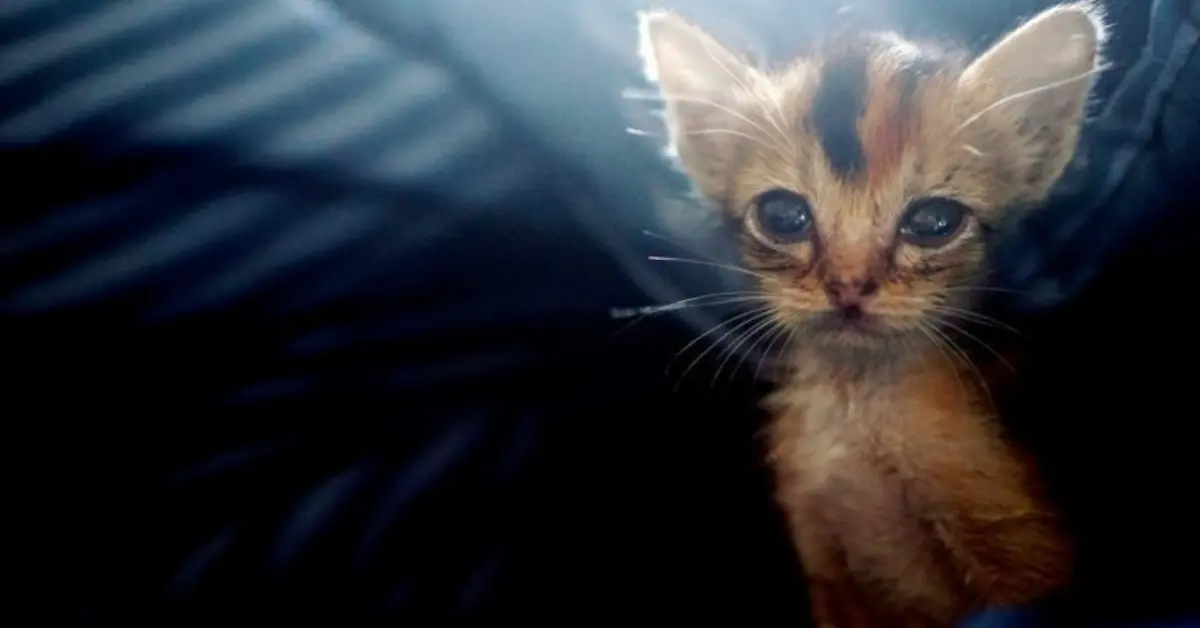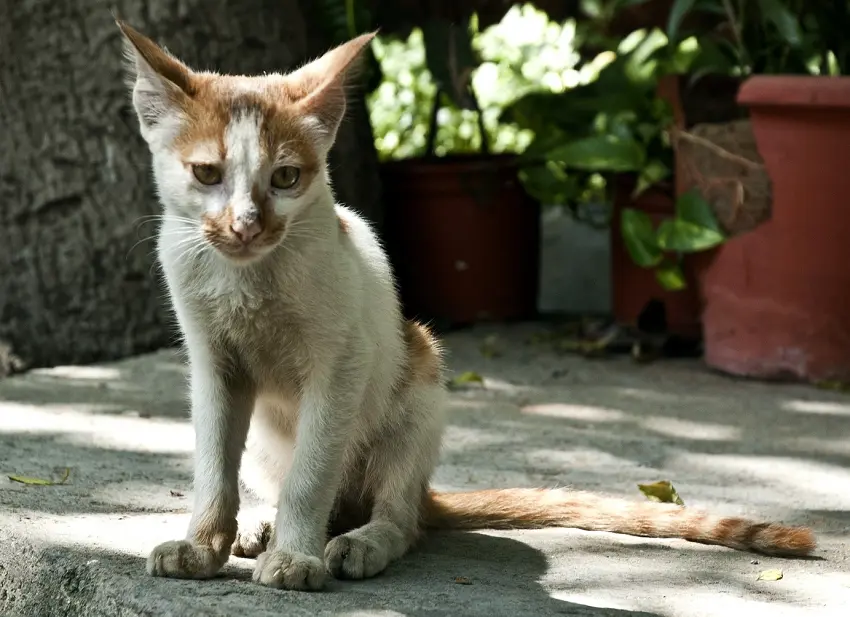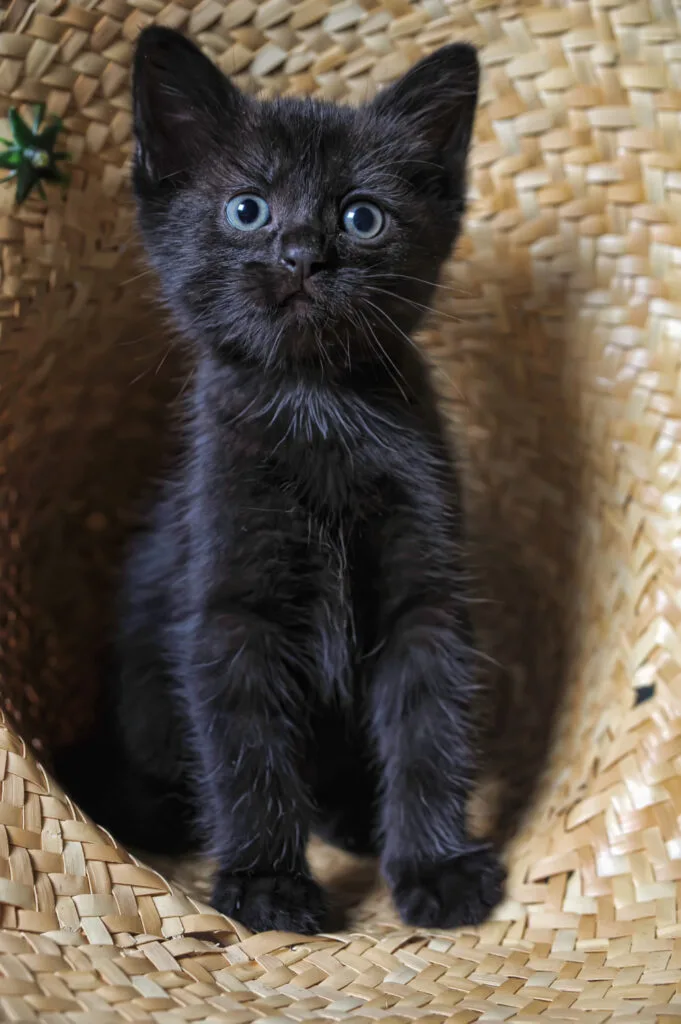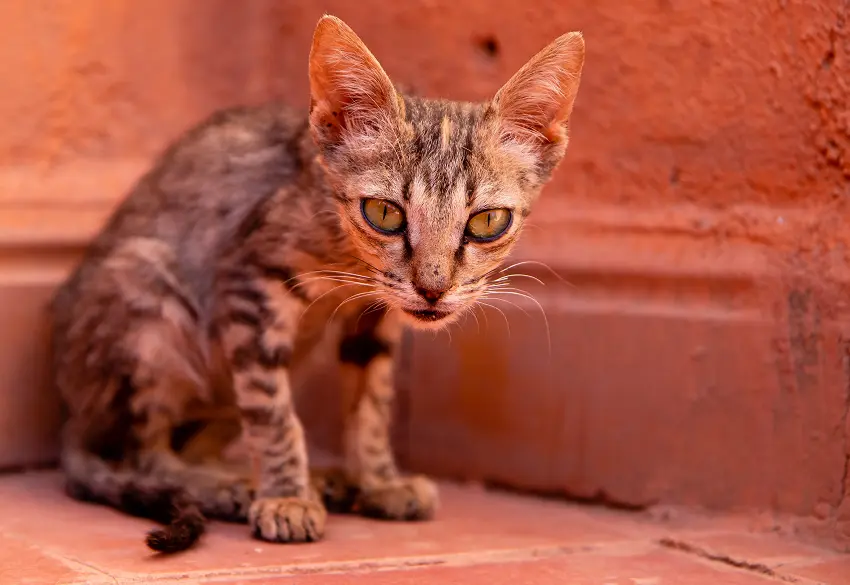How To Tell If Your Cat Is A Runt: 5 Signs to Look For
Discover the signs that indicate if your cat is a runt and gain a deeper understanding of the fascinating characteristics of smaller kittens.
Each litter can have up to one runt, but not every litter will have a runt. A runt is the smallest and weakest of the born kittens. While newborn kittens are fragile, runts are more vulnerable. Knowing how to tell if your cat is a runt will allow pet owners to give the proper care the feline needs.

I’ve had many cats ever since I’m a child, so I know well when a kitten is a runt. I also volunteer at a local shelter from time to time, where many runts are either rescued or surrendered due to their failing health.
Signs of a Runt: Identifying a Smaller Kitten
Determining if your cat is a runt can be done by observing certain signs. It’s important to note that not all smaller kittens are runts. Sometimes, a kitten may just be naturally smaller and not experience any health issues.
However, if you suspect your kitten is a runt, it’s always best to consult with a veterinarian for a proper diagnosis.

1. Smaller than normal size
One of the tell-tale signs that a cat is a runt is its small size. For adult cats, you’ll easily see that they are smaller than other kitties of the same age. This is due to poor nourishment during and after pregnancy. Learn more here how to tell if your cat is pregnent
However, you have to understand that some cat breeds are smaller than others. It’s best to see the parents or at least the other kittens in the litter so you can make a comparison.
One common sign is their smaller size compared to their littermates. Runts are usually noticeably smaller and may have difficulty keeping up with their siblings during playtime. They may also have a less developed physical appearance, with smaller paws and a delicate frame. Additionally, runts may exhibit slower growth and take longer to reach their developmental milestones.
2. Weight difference and inability to suckle
Inability or difficulty suckling may lead to a smaller weighing kitten. Runts often weigh less than their littermates and may have difficulty gaining weight at the same rate. If you notice that your kitten is consistently smaller and lighter than their siblings, they may be a runt.
As the other kittens fight to reach the mother cat’s nipples, the smaller and weaker runt is typically left behind. In most cases, the owner has to interfere through syringe feeding to ensure that the runt gets to eat. Read here for how to force feed a cat.
Many mother cats will help the runt suck milk from its nipples. Unfortunately, there are cases where the mother cat completely rejects or abandons the runt because of its lower chance of survival. This may be due to a large litter size or a mother cat that is stressed or unwell.
3. Physical deformity
If the cat has a physical deformity, there’s a high chance that it’s the runt of the litter. Some of the runt kittens I’ve seen have crooked legs, bulging eyes(Read here how to tell if your cat is blind), uneven paws, and underdeveloped organs. In fact, the runt in my cat Watson’s litter had crooked legs. Fortunately, a family took the kitty in and had him treated by the vet.
You will notice the runt will have difficulty walking or moving. It also tends to move less due to the discomfort brought by the congenital deformity. This will contribute to the runt’s failure to receive proper nutrition from its mother cat.
4. Obvious weakness
Runts are often weak. While the other kittens are playing and wrestling around, the runt can be seen sitting on a corner. This is obviously seen on the initial days after birth since the healthy kittens will often move to locate their mother.
Also, runts often have underlying illnesses, which makes them even weaker. This is the reason why this kitty requires intensive attention to increase its chance of survival.
5. Fading Kitten Syndrome
The Fading Kitten Syndrome (FKS) is very common among runts born by undernourished mothers. Take note that the entire litter can have FKS, not just the runt. But since runts are smaller and weaker, they are more likely to succumb to this condition.
The Fading Kitten Syndrome causes weakness, extremely poor appetite, isolation from the litter, and malnourishment. It’s called ‘fading kitten’ because this condition kills a lot of newborn kittens slowly as if they are fading.
Proper care is needed to save a runt showing signs of FKS. It’s best to involve the vet if you suspect that your cat has this condition.
Is it bad to pick the runt of the litter?
No, it’s not really bad to pick the runt of the litter if you’re planning to adopt a cat. While they are smaller and weaker than the others, it doesn’t mean they won’t be amazing pets. Proper care will help the runt regain its healthy so it will become stronger.
When deciding to pick the runt, you should check its interaction with the mother cat. If the mama cat nurses and grooms the runt, it’s a good sign that the runt can survive and live normally.
Meanwhile, rejected runts have to be fed by the breeder. This means that the kitty won’t get its mother’s milk. This works, too, but make sure that you get the kitty checked by a veterinarian.
Also, you should only deal with a responsible and licensed breeder. Legitimate breeders run tests on all the kittens to ensure that they are in good health.

For those who are adopting from a shelter, picking the runt is a noble choice. As you know, not all shelters or rescue organizations have enough funds to sustain all the animals. The weakest often end up not getting adopted. And when that happens, some shelters will euthanize them as more and more animals arrive.
It’s important to remember that being a runt doesn’t necessarily mean the kitten will have lifelong health problems. With proper care and attention, many runts can grow up to be healthy adult cats.
How to care for a runt
Now that you know how to tell if your cat is a runt, let’s cover how to care for it. The following are some of the things to keep in mind:

Always keep the vet involved
A runt is like a sickly child. You always have to stay connected with the doctor. Before bringing the runt cat home, visit the vet’s clinic for a comprehensive checkup. This way, the vet will diagnose if the kitty has underlying health problems or organ issues.
Monitor weight and growth closely
Runts may need additional feeding or nutritional supplements to catch up with their littermates. You should purchase a kitten formula if the mother cat is no longer around. Learn here how to feed a toothless cat
If the runt is under a month and its mother is still nursing, it’s best to let it suckle on its mama. The kitty will need some help to reach the nipple and ensure that the other kittens are not pushing it out. You may need to separate the some or all of the other kittens to make sure the runt as a turn with its mama.
Keep the runt warm
Kittens can’t control their body temperature during the first weeks of life. Runts are more vulnerable because they are weak, and cold temperatures can easily become deadly for them.
For this, you can use blankets and a heating pad. Make sure that the heating pad is not too hot for the kitty.
Socialization
Socialization is also crucial for runt kittens. Spending quality time with them, providing plenty of play opportunities, and introducing them to new experiences can help build their confidence and ensure they develop into well-adjusted adult cats.
They will require around the clock care at a younger age. Once they are old and healthy enough, you can start training them to be left alone. Please read here how long can you leave a cat alone
Frequently Asked Questions
Can there be more than one runt in a litter?
Yes, there can be more than one runt in a litter. However, the ‘true runt’ is often just one. This is more common on mother cats with very large litters. Since there are many kittens that compete for nutrition, more than one of the members may turn out underweight and small.
However, just because a kitten is small doesn’t mean it’s automatically a runt. You have to check its health. If it doesn’t have problems suckling, it could just be a genetically smaller cat.
Do runt kittens stay small?
Yes and no. Some runts grow to normal size. Meanwhile, others remain smaller than their ideal size, but it doesn’t mean that the cat isn’t healthy. It’s possible that it just got stunted, which occurs to other animals and humans as well. Learn more here why is my cat so small
How long do runt cats live?
If your vet doesn’t find any serious underlying health issues, a runt can live as long as any healthy cat, as long as they are provided proper care and nutrition. The rule of thumb is that if the runt made it to six weeks, it’s likely going to survive.
Do runt cats have health problems?
Not always but there’s a very high chance that the runt of the litter will have underlying health problems. A few common ones are heart defects, umbilical hernias, and deformities. If you are getting the kitten from a breeder, make sure that he or she provides a full report on the cat’s health.
Do mother cats reject runts?
There’s a chance that a mother cat will reject the runt because of its poor health. It’s said that mother cats can detect the chance of survival of their kittens. And if the runt is too weak, the mama cat will likely abandon or reject it. Still, there are instances when the mother cat gives more attention to the runt. learn here why does mother cat move only one kitten
Take note that a mother cat can reject any of its kittens for some reason. When this happens, you should take care of the kitty to ensure that it will survive.
Are runts always born last?
Typically, runts are born last, as they are conceived later than other members of the litter. This results in them being weaker and smaller, with some exhibiting underdeveloped skeletons and organs.
Nevertheless, it’s important to note that the runt isn’t always the last to be born. There are instances when runts are born ahead of other healthy kittens. This underscores the fact that birth order alone does not determine which kitten is the true runt.
Conclusion
In conclusion, understanding the signs, causes, health considerations, and personality traits of runt cats is crucial for providing them with optimal care. By identifying the signs of a runt, such as smaller size and slower growth, cat owners can take the necessary steps to ensure their well-being.
Genetic factors, health conditions, and complications during pregnancy can contribute to a kitten being a runt, but with proper care and attention, they can grow up to be healthy adult cats.
Runt cats often possess unique personality traits, such as resilience and affection, which should be embraced and celebrated. By following the tips provided, cat owners can provide the best possible care for their runt cats and help them thrive.
Remember to consult with a veterinarian for proper diagnosis and guidance. Discovering the fascinating characteristics of runt cats can deepen our understanding and appreciation for these special felines.
